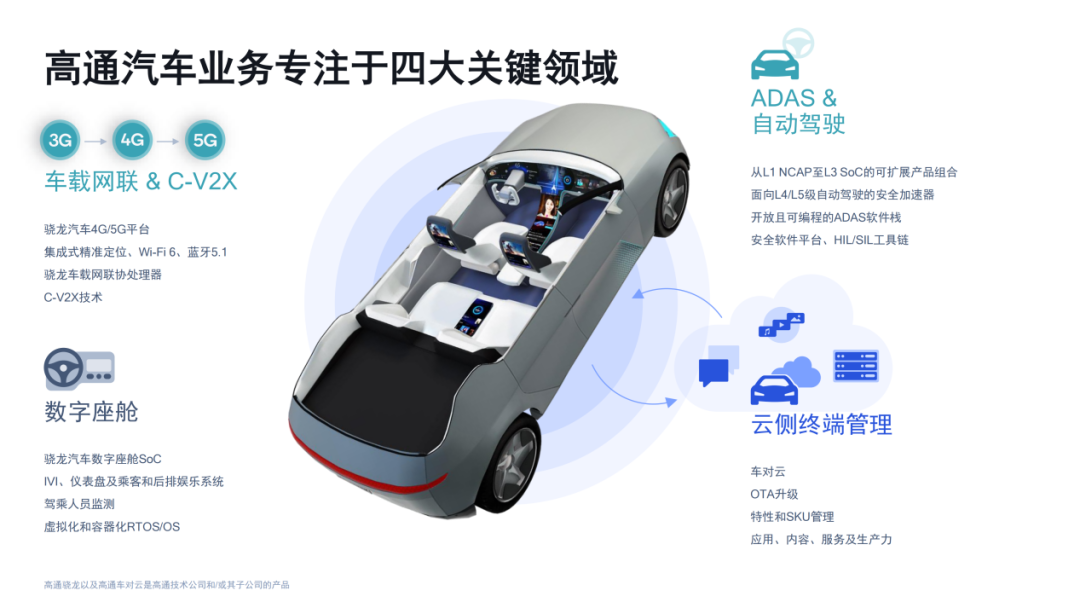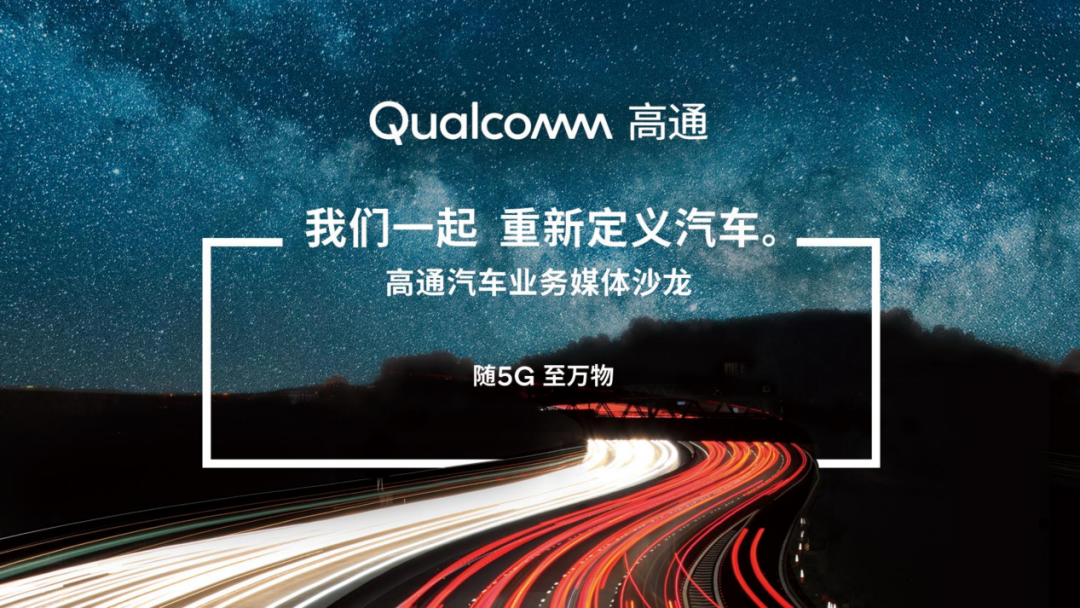Author: Yu Peng
For the automobile industry that is anxious about overall growth, the friendly and enormous potential of innovative technological products for domestic car consumers is undoubtedly a must-win place.
Whether it is autonomous driving or intelligent connected vehicles, chip support is indispensable on the road to the future of the transportation industry.
Speaking of chips, names like Qualcomm and Snapdragon always come to mind quickly. As a typical case of the industry chain driving rapid iteration, Qualcomm’s position in the mobile phone field is believed to be self-evident.
After entering the automotive industry, Qualcomm also has a similar plan.
Before the 2021 Shanghai Auto Show, we were invited to participate in Qualcomm’s automotive business media salon. Vice President-level executives from Qualcomm shared the latest business developments and innovation progress in the automotive field. Qualcomm also invited executives from companies such as NIO, XPeng, Horizon Robotics, Bosch, and Unicorn Robotics to discuss changes in automotive technology together.
Qualcomm’s “Chip Thinking”
“Qualcomm will use the mature IP accumulated in the mobile end to better promote the transformation of the automotive industry”
During the event, Qualcomm’s Vice Presidents described Qualcomm’s expectations for the automotive industry.
Although the market performance of Qualcomm’s new flagship mobile chip, Snapdragon 888, did not meet expectations, it still cannot stop it from becoming a standard configuration for high-end models of major domestic smartphone brands in 2021.
This is easily understandable. As the core component of a smartphone, the chip’s gap directly affects how much market-share the new phone models can achieve for brands, and how long this advantage can be maintained.
Behind this, Qualcomm, which has always remained elusive and has become richer quietly, certainly cannot be ignored.
Qualcomm is trying to continue its rapid growth in the mobile end to the automotive industry. Its automotive solutions have covered four key areas: vehicle-mounted network and cellular vehicle-to-everything (C-V2X), digital cockpit, advanced driving assistance systems (ADAS), and autonomous driving and cloud-terminal management.
According to the research of Strategy Analytics, nearly three-quarters of all cars sold in 2027 will have embedded cellular connectivity, which is a significant increase from 20% in 2015.
With the continuous integration and evolution of intelligent connected vehicles, 5G, and autonomous driving, the automotive industry is constantly rebuilding its own business models, bringing consumers an increasingly diversified driving experience.
Although the difficulties of industrial design and software-hardware coupling cannot be compared between smartphones and automobile manufacturing, judging from the importance of technology to experience transformation Landing from the level of attention, the concept of “experience-driven” still dominates the respective industries and will continue to do so for a long time.According to the released data, more than 150 million cars worldwide have adopted Qualcomm’s wireless solutions for automotive, including in-vehicle connected services, infotainment, and vehicle-to-everything (V2X) communication. The total estimated value of Qualcomm’s automotive solutions orders has exceeded $8 billion. Currently, Qualcomm has won orders for information and entertainment projects from 20 leading global automakers.
The second-generation Snapdragon automotive digital cockpit platform, Snapdragon 820A, launched in 2016, is still a highly demanded solution in the eyes of many car manufacturers. If this iteration speed were applied to the mobile phone industry, it would have been blocked by Chinese Internet phone brands that were once deeply trapped in the sea of mobile phones.
According to Qualcomm’s plan, the fourth-generation Snapdragon automotive digital cockpit platform, launched in January this year, uses 5nm process technology. Qualcomm is trying to build it as a central hub for high-performance computing, computer vision, AI, and multi-sensor processing, further supporting the evolution of cars towards regional systems architecture. Although the fourth-generation Snapdragon automotive digital cockpit platform has been sampled, according to Qualcomm’s roadmap, its development kit will be officially ready in Q2 2021, and it will be commercially produced by the end of 2022. The third-generation Snapdragon automotive digital cockpit platform, represented by the 7nm Snapdragon 8155, still appears to be particularly important for accelerated deployment in the current year.Translate the following Markdown Chinese text into English Markdown text professionally. Retain the HTML tags inside Markdown and output results only.
It is worth noting that Qualcomm’s solutions in the digital cockpit field can already provide computing power support for top-level audio, video, streaming entertainment, and situational safety needs with multiple 4K displays in the car.
As various hardware and algorithm iterations in the industry chain are rapidly evolving, like the wooden barrel effect that is constantly being raised. Although not directly competing in the field of autonomous driving, Qualcomm is both a participant in the formulation of multiple industry standards and an important supplier in the industry chain. Of course, it cannot be the most sluggish “shortboard.”
Sun Gang, Vice President of Qualcomm’s Product Market, said: “For a long time, Qualcomm has invested heavily in the research and development of CPU, GPU, AI, DSP, cellular connectivity, and other technology modules. Our rich technical accumulation and rapid technological progress enable us to quickly provide partners with high-performance and high-efficiency products in the automotive industry.”

Conclusion
To this day, Qualcomm still leaves an impression on the industry as a commercial team filled with geek temperament. Although it has grown to the point where it needs to face antitrust investigations in the mobile arena, there is still a lot of work to be done in the automotive industry, and even more so to face the challenge of chip giants such as NVIDIA.
From the latest released information, it can be seen that Qualcomm is working hard to expand its “circle of friends” in the automotive industry – note that these few words have even been written into the press release, showing Qualcomm’s urgent need for cooperation landing. Next, how many Tier 1s, network operators, and cloud service providers will join Qualcomm’s friends list?
In the first third of 2021, the industry still faces many uncertainties, but we will keep a close eye on it.
This article is a translation by ChatGPT of a Chinese report from 42HOW. If you have any questions about it, please email bd@42how.com.
